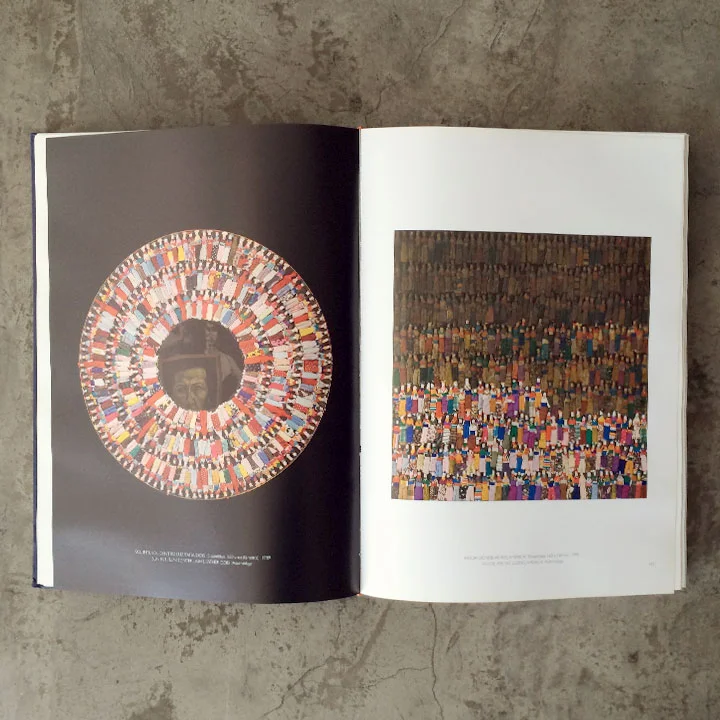Quito: Cultural Capital
In the few days we spent in Quito, art was on every corner. In fact most of the painstakingly restored, UNESCO-protected buildings housed exhibitions—from ancient to contemporary to craft. Here's what we saw and loved: Centro Cultural Metropolitano This colonial building was erected on the site of a pre-Hispanic palace and has a long tradition of showcasing old masterpieces. When we visited, layered in front of the dusty paintings in an impromptu manner, hung a contemporary exhibit "Mirada de Artista" which engaged the historic works in direct conversation.
Casa del Alabado Nearby Casa del Alabado chronicles pre-Columbian life through a collection of pottery, stone and wood artifacts. The storytelling at this mini museum imbues indigenous history with a sense of magic and mysticism, instead of the (often dry and clinical) anthropological approach. The pieces feel alive and modern instead of like specimens.
Casa Cultural Itchimbia On an ambitious expedition, we climbed Itchimbia, one of Quitos countless hilltops, which directly faces our apartment (even from a kilometre away, we had no trouble spotting it’s stark geometric lines against the historic backdrop). The jewel atop Itchimbia hill is the Casa Cultural building. On the day we were there, it housed a large photo exhibition by Juan Diego Perez Arias. The thread of mysticism from Casa de la Alabado ran through this show as well. We were getting a glimpse into Ecuador’s hidden corners, documented through stories about people who are fighting to preserve ancient crafts and activities in the face of a country that is rapidly changing.
Centro de Arte Contemporaneo Down the street from our apartment, in the San Juan neighbourhood, stands another vibrant cultural institution—Centro de Arte Contemporaneo. The building is a beautifully restored military hospital. During our visit it housed a small number of exhibits (one using live ants!) but at peak times it's a hub of activity, staging performances and parties. Admission is free.
Capilla de Hombre One more hill that is definitely worth climbing is in the neighbourhood of Bellavista with the infamous Capilla del Hombre as the destination. This monument documenting the suffering of South America's indigenous people was built by artist Oswaldo Guayasamín. The building, housing may of the artist's masterpieces is cavernous and moving. Afterwards, you might find yourself needing a quiet spot, so head up to the garden of Guayasamin's residence (and his final resting place) dubbed "the tree of life".
Oswaldo Viteri Browsing the well-stocked collection of art books that our host Fernando left for us, I was pulled in by the work of another local artist, Oswaldo Viteri. Rooted in folklore, Viteri's mixed media works are layered and energetic. I was immediately drawn to his series with traditional, cloth dolls made by Ecuador's indigenous communities. Under Viteri's direction the dolls were carefully arranged, blended and painted, loudly underscoring one of Viteri's main themes: "mestizaje" (the blending of indigenous and European races), a contemplation on Ecuadorian identity. It is possible to visit the artist's home and studio and speak to him and his family. Sadly, we weren't able to make the arrangements in time.
Craft Shops As we explored the city's thriving art scene, I was hoping to add some figurines to my own travel collection. Here are some artisan shops I'd recommend visiting: • Tianguez is a pleasant spot to have lunch on the San Francisco Iglesia Square, though the fence around the patio has a bit of a ‘gated’ quality. More impressive is their fair trade gallery and store that runs deep and tunnel-like under the church. • If you're looking for a genuine treasure (or quality replica) try Ag, a storefront run by an incredibly kind shopkeeper. • For more of a crowded market feel, visit the Productos Andinos Co-op with textiles and small rustic crafts filling every corner. It's definitely the affordable choice. • A curated (but pricey) affair is Galeria Latina. The carefully stocked shop offers handmade items (clothing, art, edibles) from across Latin America.

































